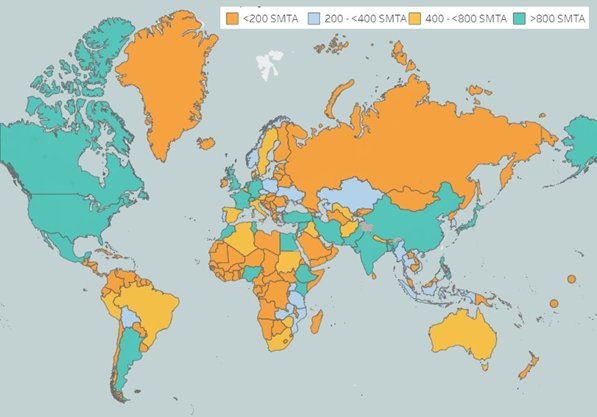SDG Target 15.6
The Multilateral System of the International Treaty contributes to implementing the Sustainable Development Goals, in particular to the SDG 15, Life on Earth. Its related Target 15.6 promotes the fair and equitable sharing of the benefits arising from the utilization of genetic resources and the appropriate access to such resources, as internationally agreed.
The data generated through the exchange of material in the Multilateral System has been used to monitor progress with the relevant SDG indicator 15.6.1, the number of countries that have adopted legislative, administrative, and policy frameworks to ensure fair and equitable sharing of benefits.
The indicator focuses on progress made in adopting legislative, administrative, or policy frameworks on access and benefit-sharing (ABS) to ensure the fair and equitable sharing of benefits arising from the utilization of genetic resources. It underlines countries' efforts to implement two primary international instruments regarding the management of genetic resources; the Nagoya Protocol and the International Treaty on PGRFA.
It is a composite indicator that takes into account the following information on the side of the International Treaty:
- Trend in Contracting Parties to the PGRFA
- Trend in the use of the Standard Material Transfer Agreement
- Trend in reporting on national implementation through the Online System
The data monitored for the Nagoya Protocol are:
- Countries that have reported legislative, administrative, and policy framework or measures reported to the ABS Clearing-House
- Countries that are Parties to the Nagoya Protocol
The information analyzed up to 2020 from the Multilateral System of the International Treaty referred to the number of transfers reported with the Standard Material Transfer Agreements (SMTAs). The plant material provider declares each transfer to the Governing Body through a dedicated online system.

While this information was found useful to monitor progress, the information system in place allows for a more detailed analysis of the exchange of plant genetic resources between providers and recipients at the global level. In fact, a single SMTA may refer to hundreds of materials of many different crops being exchanged from one corner of the world to the other. The tools developed by the Secretariat of the International Treaty facilitate the generation of statistics at the country level on the actual number of materials received, not just to the number of shipments or the number of agreements concluded by users of the Multilateral System in the country.
The strengthened indicator, which captures the number of materials received by plant breeders and farmers in a country from the Multilateral System of the International Treaty, was documented by the Biodiversity Indicators Partnership in 2019. The initiative compiled and provided online a well-furnished list of global indicators available for review under preparatory work of the post-2020 global biodiversity framework. Thus, the Multilateral System facilitates the exchange of plant material, but it enables the monitoring of globally agreed goals related to biodiversity and sustainable development.
Links:
- More information on the monitoring process
- More information on the contribution of the International Treaty to the SDGs

